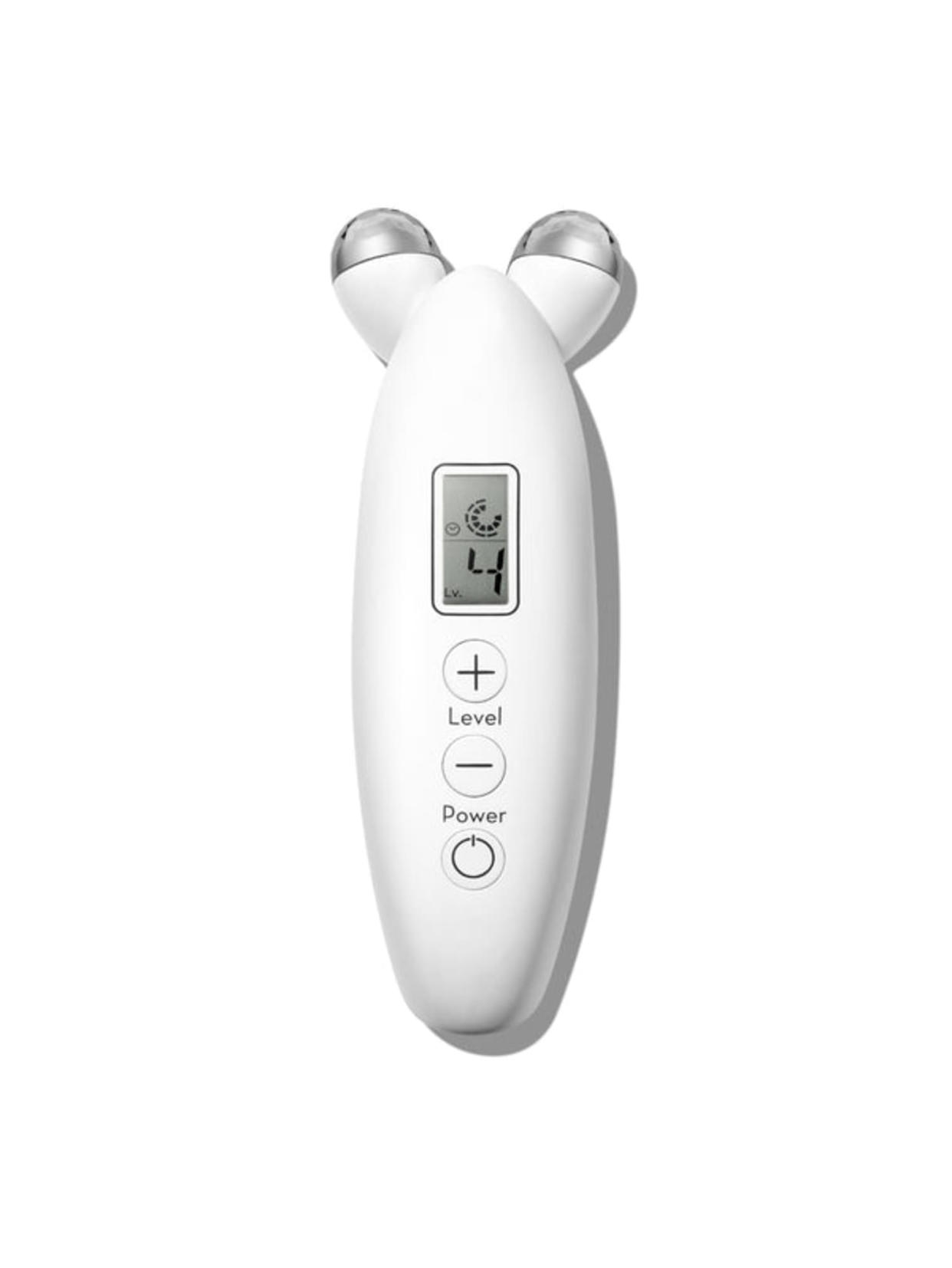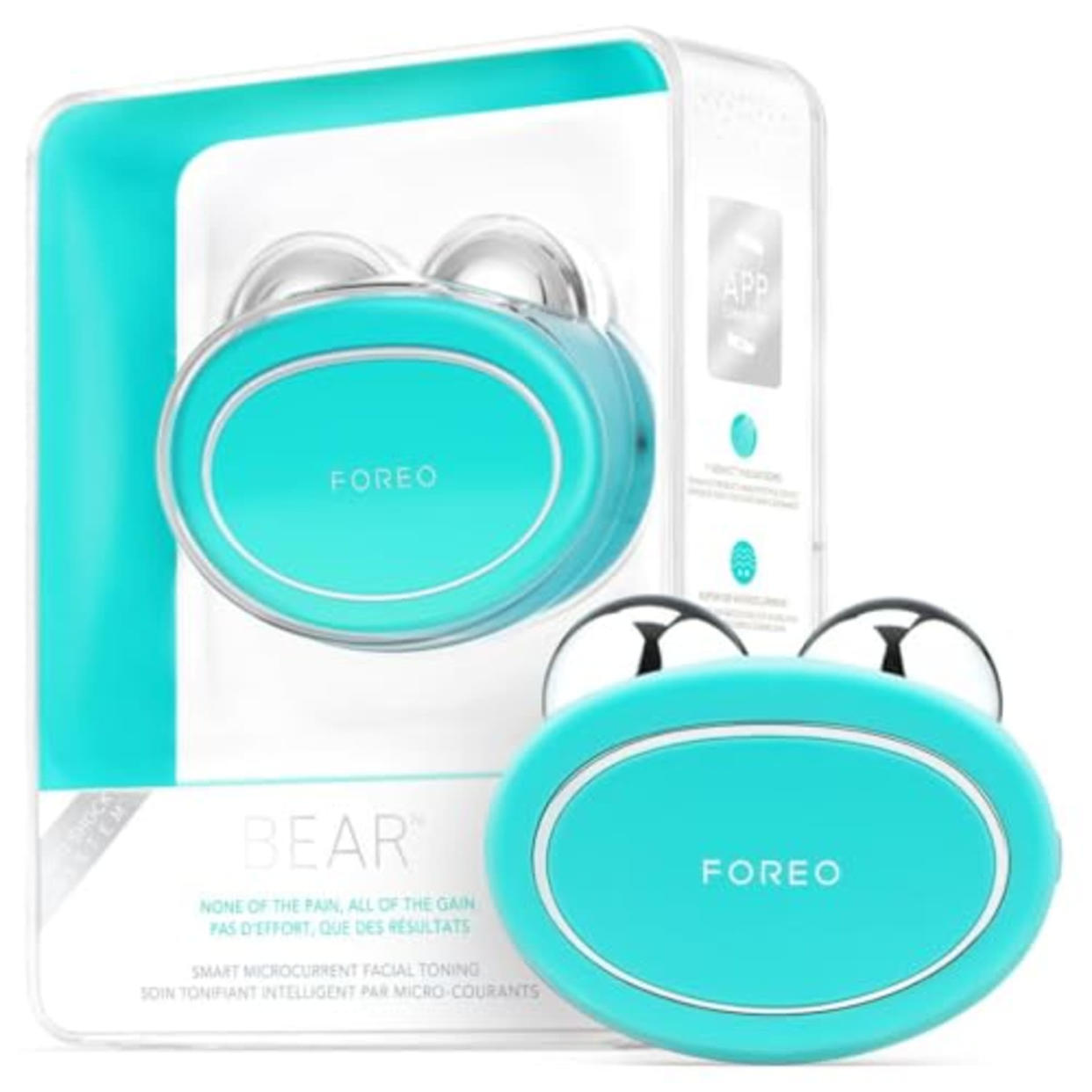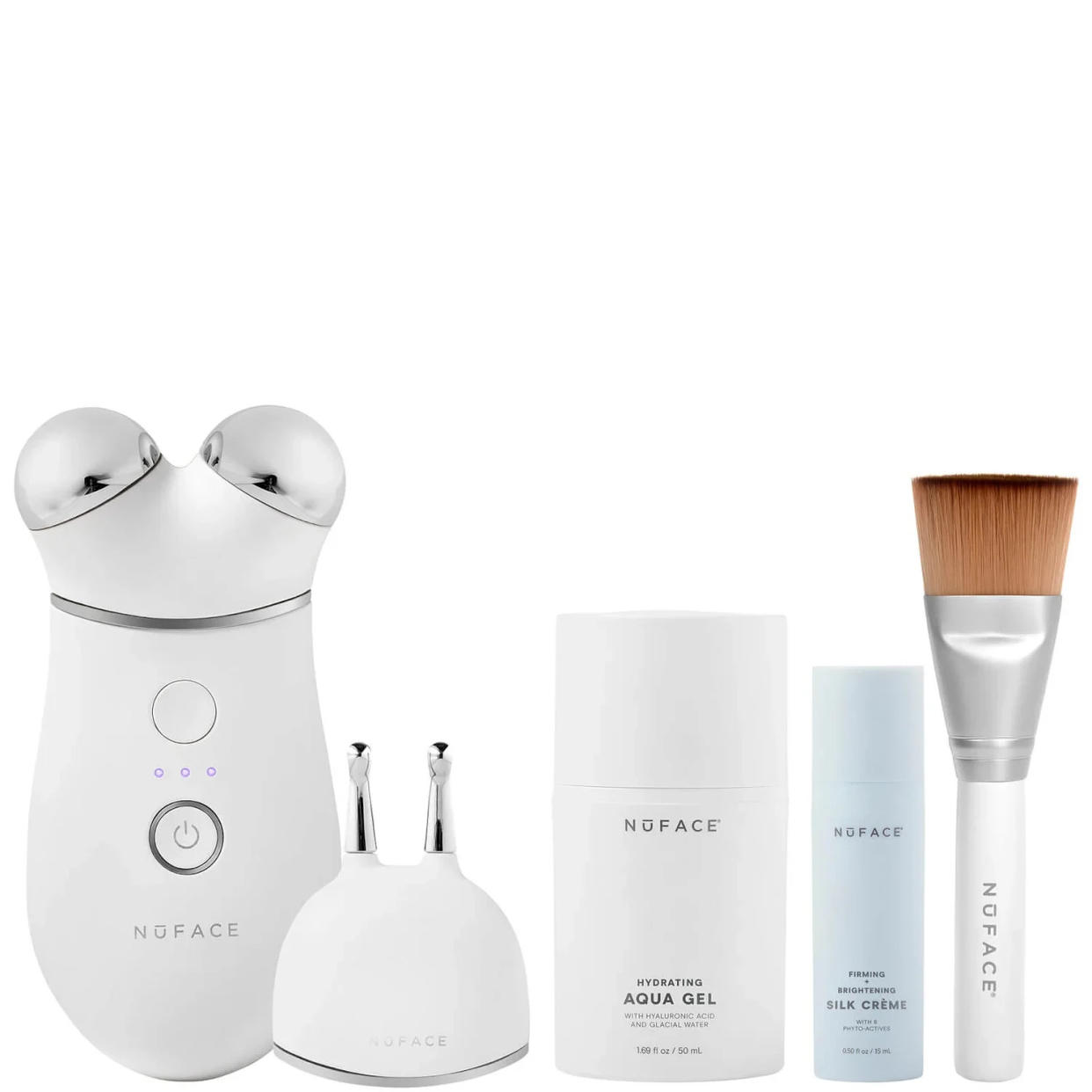The best at-home microcurrent devices to lift and firm skin
Select independently determines what we cover and recommend. When you buy through our links, we may earn a commission. Learn more.
While a regular visit to an aesthetician or dermatologist for a treatment might not be in the cards, the best microcurrent devices offer a way to smooth, lift and firm skin — all without having to leave your home. These tools work “by delivering low-level electric currents to the skin and muscles of the face,” says Dr. Geeta Yadav, a board-certified dermatologist in Toronto, Canada.
Emitted for minutes at a time, these currents can stimulate the muscles beneath the skin, which may give your complexion a lifted, toned appearance and even improve collagen production for an overall firmer, smoother look, she says.
That said, microcurrent devices can be an investment, and they vary in their construction and in their results. We spoke with three dermatologists to find out what you should keep in mind when you’re shopping, and how to use a microcurrent device to maximize its benefits.
SKIP AHEAD How we picked the best microcurrent devices | The best microcurrent devices in 2024 | How to shop for microcurrent devices | How does microcurrent benefit skin? | What is the difference between FDA-cleared and FDA-approved?
How we picked the best microcurrent devices
We spoke to dermatologists to get their recommendations for the best microcurrent devices, since these tools can be expensive and, for the most part, only deliver results so long as you actually use them. They told us that while microcurrent tools do offer benefits from the microcurrent alone, there are other attributes to look out for to get the most from the technology.
Suggested usage: Since you’ll need to use microcurrent devices consistently to maintain results, treatment time is worth factoring in.
FDA clearance: Clearance from the U.S. Food & Drug Administration, which is different from FDA approval, means that the device is equivalent to technology that’s already been approved by the agency for safety and efficacy — but they’re not themselves approved. (More on this below.)
Nodes: The shape of the applicator that dispenses the microcurrent can make it easier to reach certain areas of the face, like the eyes and lips.
Additional functions: Some microcurrent devices come with other skin care functions like LED therapy.
The best microcurrent devices in 2024
If used correctly and consistently, microcurrent devices can lend the appearance of more lifted, firmer and smoother skin. In addition to expert recommendations, our list also includes options that we’ve tried as well as other highly rated options.
Theraface Pro
Theraface Pro

This tool is a favorite for Dr. Deanne Mraz, a board-certified dermatologist in Westport, CT, since it has microcurrent technology in combination with customizable settings and attachments for cleansing — as well as percussive and LED therapy. (The percussive therapy uses massage to relieve tension and increase circulation, according to the brand.)
While she says that it’s pricier and more complicated to use than other devices, if you’re into using devices throughout your skin care routine, “you can get a lot done with this one versus cluttering your countertop with several,” she says. It also comes with three massager attachments, an LED light therapy attachment, a facial cleansing attachment, conductive gel, a carrying case, storage stand and charging cable.
FDA-cleared: Yes | Treatment time: 8 minutes | Number of levels: One
FaceGym Pure Lift Facial Skincare Tool
FaceGym Pure Lift Facial Skincare Tool

FaceGym Pure Lift Facial Skincare Tool $ at FaceGym
For a no-frills, microcurrent-only option, Mraz points to this tool. Not only does it have five levels of microcurrent — so you can start at a low intensity and work your way up as you get more comfortable with it — but it also has two small nodes for getting into smaller areas. Plus, “the sensors are easy to clean,” says Mraz. (You can just wipe them clean with a damp cloth after each use.) The device comes with a bottle of the brand’s Pure Lift Collagen Serum, although you can use it with any water-based serum, and a charging cable.
FDA-cleared: Yes | Treatment time: 10 minutes | Number of levels: 5
Ziip Halo
Ziip Halo

Ziip Halo $ at Amazon
Ziip Halo $ at Ziip
Ziip Halo $ at Rescue spa
I’ve used a few microcurrent devices, but my favorite so far has been the Ziip Halo. It has a small shape (about the size of a computer mouse) that’s easy to move around my face, and it’s the only device to use both microcurrent and nanocurrent technology; nanocurrents (which are smaller than the former) work on a cellular level in skin, which make for longer lasting results, according to the brand. My skin looks less puffy and a bit smoother after a few months of intermittent use.
“It’s a lightweight design and has a silicone grip, so it doesn’t slip during use,” says Dr. Rachel Nazarian, a board-certified dermatologist in New York City. “It also has an app that connects to the device which makes it more fun and interactive for the user.” The Ziip Halo comes with a charging cable and the brand’s conductive serum.
FDA-cleared: Yes | Treatment time: 4 minutes | Number of levels: One
Solawave 4-in-1 Skincare Wand
Solawave 4-in-1 Skincare Wand

Solawave 4-in-1 Skincare Wand $ at Amazon
Solawave 4-in-1 Skincare Wand $ at Nordstorm
Solawave 4-in-1 Skincare Wand $ at Ulta
Mraz calls this a good option for someone who wants a straightforward, easy-to-use device — or the person who’s not sure about how consistent they’ll be. Plus, she says, “I like that because of its shape, you can safely get pretty close to the eye area versus some of the bigger, bulkier devices.” Instead of microcurrent, however, it uses a galvanic current, which helps your serums and moisturizers better absorb into skin, according to the brand. (Unlike microcurrent, it’s not invasive — and therefore won’t activate muscles.) It also has red LED light therapy, facial massage and a warming sensation, which can help reduce puffiness, according to Solawave.
FDA-cleared: Applied + pending | Treatment time: 3 minutes | Number of levels: One
Foreo Bear Facial Toning Device
Foreo Bear Facial Toning Device

Foreo Bear Facial Toning Device $ at Amazon
Foreo Bear Facial Toning Device $ at Nordstorm
Foreo Bear Facial Toning Device $ at Ulta
What sets Foreo Bear apart is that it can deliver results in as soon as little as two minutes a day, according to the brand. It has 10 microcurrent levels, giving you the most control over the intensity of any device on this list, and you can use it on both the face and neck. The Foreo Bear is made of 100% silicone (so it’s waterproof), comes with a charging cable, stand, and travel pouch and lasts up to 90 uses on a single charge, according to Foreo.
FDA-cleared: Yes | Treatment time: 2 minutes | Number of levels: 10
NuFace Trinity+ Starter Kit with Eye and Lip Attachment
NuFace Trinity+ Starter Kit with Eye and Lip Attachment

NuFace Trinity+ Starter Kit with Eye and Lip Attachment $ at Dermstore
NuFace Trinity+ Starter Kit with Eye and Lip Attachment $ at Nordstrom
NuFace Trinity+ Starter Kit with Eye and Lip Attachment $ at Sephora
The NuFace device pairs with an app that will offer and guide you through various routines. “I love the design, which is super small and compact, and there’s no pain or discomfort with each treatment,” says Nazarian. While the device comes with the two knobs to conduct the microcurrent, this set also has a targeted lip and eye attachment to give you a more concentrated treatment, which makes it a favorite of Yadav. “The small tips are great at getting into the arch of the brow,” she says. It comes with a storage cradle, charging cable, conductive gel and moisturizer.
FDA-cleared: Yes | Treatment time: 5 to 15 minutes | Number of levels: 3, plus a boost button
How to shop for microcurrent devices
The biggest factor in getting results from microcurrent devices is how often — and how consistently — you use them. In most cases, you’ll only maintain them if you use them regularly, so Mraz recommends factoring in your schedule and lifestyle when you’re shopping so that you go with a device that you actually have time to use regularly. That goes for both the treatment time, which can range from two minutes to more than 20, based on how you use it, as well as the frequency. “Most will recommend using it five times a week for the first two months or so, and then maintaining results with a schedule of three times a week,” she says.
Next, look to see whether it’s FDA-cleared, says Yadav. (More on that in a moment.) She also recommends looking for brands that have clinical studies to back up their claims. “A lot of at-home devices can be gimmicky,” she says. “Evidence of efficacy with clinical studies, as well as high-quality before and after photos, will help you to avoid spending a lot of money on something that doesn’t work.”
Finally, seek out additional attachments. Some come with interchangeable heads or attachments, while others can be paired with those sold separately. “Look for microcurrent that also combines LED light therapy for amplified skin benefits,” says Mraz. (LED light therapy has the potential to improve acne, inflammation, and healing.)
Also, Yadav recommends looking for a device with a head that features prong-style electrodes, since these “are better at delivering targeted energy than an applicator with a flat surface,” she says.
What is the difference between FDA-cleared and FDA-approved?
Although this won’t make or break it, FDA clearance means that the FDA has assessed the product and determined that its technology can be marketed as safe, effective and substantially equivalent to another legally marketed device. (FDA approval, meanwhile, requires a rigorous legal and testing process.)
However, since these devices are operating at a much weaker strength than those found in doctors’ offices or used for serious medical purposes, some experts say that even FDA clearance may be more of a marketing advantage rather than a true measure of the device’s efficacy. Still, “it is a sign of more rigorous testing and extensive research,” says Mraz.
How does microcurrent benefit skin?
Microcurrent technology works on a few different levels to improve skin’s texture, tone, and elasticity, according to Mraz. Here’s a breakdown of what it can do for the skin:
Firms and tones skin: On a cellular level, “microcurrent stimulates the production of adenosine triphosphate, or ATP, which is essentially fuel for healthy cells,” she says. ATP has a lot of roles in skin: It’s involved with muscle contractions, the production of proteins like collagen and elastin, and overall cell communication and function. As a result, “it gives a lifted appearance to skin by stimulating production of new collagen fibers,” says Nazarian.
Reduces swelling: Microcurrent also moves fluid in the skin, which can help reduce and reverse swelling. This also “improves blood flow to the skin, delivering oxygenated, nutrient-rich blood to the skin,” says Mraz.
Enhancing product absorption: The act of massaging the microcurrent nodes into skin may also help boost the absorption of your skin care products, says Mraz.
Skin healing: Microcurrent can also help with wound healing, according to Nazarian.
Meet our experts
At NBC Select, we work with experts who have specialized knowledge and authority based on relevant training and/or experience. We also take steps to ensure all expert advice and recommendations are made independently and without undisclosed financial conflicts of interest.
Dr. Deanne Mraz, FAAD, is a board-certified dermatologist and president of Modern Dermatology in Westport, CT. She’s also a clinical professor of dermatology at Yale New Haven Hospital and has a special interest in cosmetic dermatology and laser surgery.
Dr. Geeta Yadav is a board-certified dermatologist and founder of Facet Dermatology in Toronto, Canada. Her areas of research include skin of color and conditions like atopic dermatitis and psoriasis.
Dr. Rachel Nazarian, FAAD, is a board-certified dermatologist at Schweiger Dermatology in New York, NY. Her expertise includes cosmetic treatments, like laser and injectables, as well as skin cancer screening and dermatologic surgery.
Why trust NBC Select?
Deanna Pai is a freelance beauty writer and editor who has been covering beauty and health for more than a decade, including topics like ceramides and products for people with dermatitis. For this article, Pai spoke to three dermatologists to narrow down the best microcurrent devices to shop, and highlighted their recommendations about what to consider when shopping.
Catch up on Select’s in-depth coverage of personal finance, tech and tools, wellness and more, and follow us on Facebook, Instagram and Twitter to stay up to date.
